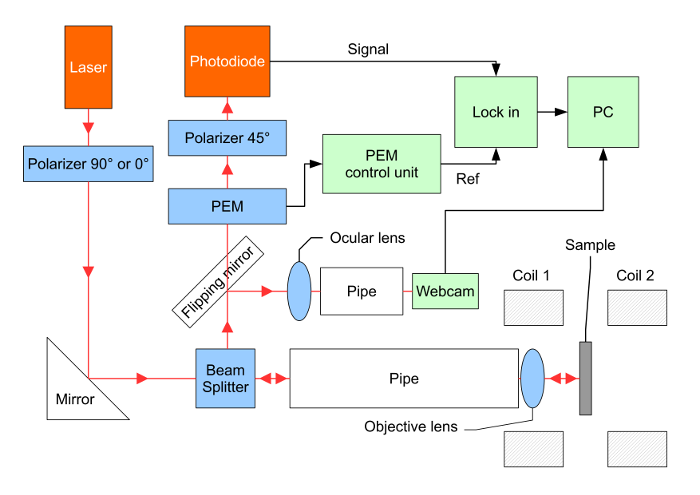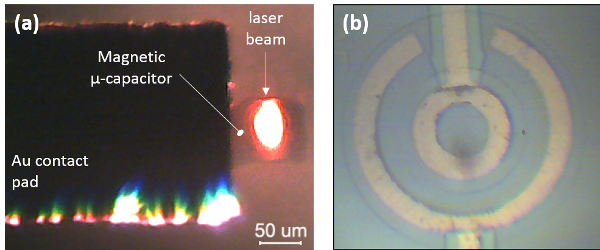Magneto-Optical Kerr Effect on micro-sized structures
Christian Rinaldi, Matteo Cantoni,
NaBiS group and collaborators (ask for magnetic characterizations)
Nanomagnetism Lab – via G. Colombo 81, 20133 Milano (Italy)
Description
Magneto-Optical Kerr Effect (MOKE) is a powerful technique that enables to study the magnetic properties of samples by using polarized light. When a beam of linearly polarized light impinges on a magnetic sample, its polarization is modified and the beam becomes elliptical, with a rotation of the major axis proportional to the sample’s magnetization vector (M). From the analysis of helicity and rotation versus the external magnetic field (H), it is possible obtain the magnetization curve of the sample (M vs H). H and M can be applied and measured, respectively, along different directions (e.g. in-plane and out-of-plane), thus allowing for a full 3D magnetic characterization of thin films.
Using a microscope objective as illustrated in Figure 1, the laser spot on the sample surface can be reduce to a diameter in the order of 10 µm, thus allowing for magnetic characterization with spatial resolution, especially useful for the characterization of patterned samples and/or devices. Two representative examples are shown in Figure 2.

The measurement setup can host several options:
- low temperature measurements, with the sample mounted in a cryostat with a glass window for optical access
- magneto-electric experiments, with the sample electrically connected to external electrical sources (e.g. Keithley 2611A SourceMeter, Keithley 6221 Current Source, testing module for ferroelectric materials AixACCT TF Analyzer 2000 , etc.)

Specifications
- Polar (out-of-plane magnetization) and longitudinal (in-plane magnetization) configurations can be used.
- Beam dimension at the sample surface: d~ 10-30 µm.
- Sample dimension. there’s no particular restriction. We usually investigate 10×10 mm2 samples, but bigger samples can be investigated.
- Laser sources. Typ. a thermally stabilized laser diode, λ ~ 635-670 nm, P< 10 mW. Alternatives: 831 nm, 1310 nm, 1550 nm.
- Frequency modulation. To improve the signal-to-noise ratio, a lock-in technique is usually employed, with two different options for the modulation of the laser beam:
- mechanical chopper (frequency up to 1 kHz)
- photoelastic modulator (f=50 khz).